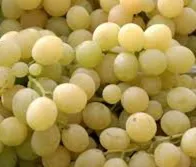 The table grape 'Italia' is the most cultivated variety and the most consumed not only in Italy but also in Brazil; it is quite appreciated for its sweet taste. However, the fungal infections occurring during postharvest storage can cause losses ranged between 30-50%. Among infections the most serious is the grey mould caused by Botrytis cinerea, whose infection can occur already in the field during flowering and at harvest.
The table grape 'Italia' is the most cultivated variety and the most consumed not only in Italy but also in Brazil; it is quite appreciated for its sweet taste. However, the fungal infections occurring during postharvest storage can cause losses ranged between 30-50%. Among infections the most serious is the grey mould caused by Botrytis cinerea, whose infection can occur already in the field during flowering and at harvest.Dr Youssef Khamis, a scientist at Plant Pathology Research Institute of Giza (Egypt), and Dr. Sergio Roberto Ruffo, a scientist at the Department of Agronomy of the Universidade Estadual de Londrina (Brazil), have investigated the effectiveness of potassium and calcium salts in controlling the grey mould growth on table grape 'Italia'.
For the study, 8 salts were compared: potassium sulphate (PS), potassium sorbate (PSo), potassium carbonate (PC), potassium bicarbonate (PB), calcium sulfate (CS), calcium chelate (CCh), calcium chloride (CC) and calcium silicate (CSi).
The study was carried out first in vitro and then in field. In vitro tests showed that the salts PSo, PC, PB and CCh inhibited completely the mycelium development.
The aim of work carried out in field on naturally infected grapes was evaluating not only the salts effectiveness against grey mould but also the application strategy of salts.
Salts (1% w/v) were applied comparing 3 strategies:
- spray a week before harvest;
- immersion in the saline solution after harvest;
- combined treatment: pre-harvest spray followed by postharvest immersion.
The analysis showed that all salts resulted effective in controlling grey mould infection when compared with control (= grapes treated with water) for three tested distribution strategies. The reduction percentage of infection ranged from 77 to 100% with pre-harvest spray, from 91 to 98% with the combined distribution (spray+immersion), and from 61 to 100% with post-harvest immersion .
The potassium salts, PB and PSo, were the most effective; they completely inhibited the mycelium growth when applied before or after harvest and had no negative impact on the quality of the grapes.
Moreover, the scientists estimated that it is possible to treat an hectare of vineyard with 8-10 kg of potassium bicarbonate (PB) at 1% thus reducing the costs up to 10 times compared to those currently supported by using only synthetic fungicides.
The scientists conclude that the application of salts just before harvesting could be an effective strategy to minimize fungal infections during postharvest storage.
Source: Youssef K., Ruffo Roberto S., "Applications of salt solutions before and after harvest affect the quality and incidence of postharvest gray mold of 'Italia' table grapes", 2014, Postharvest Biology and Technology, Vol. 87, page 95-102. http://www.sciencedirect.com/science/article/pii/S0925521413002573
